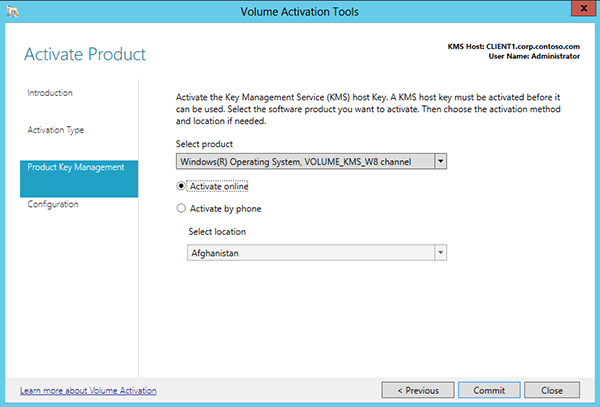Windows Activation Update .exe
- Windows Activation Update .exe Android
- Windows Activation Update .exe Download
- Windows Activation Update Windows 10
Windows Server 2019 Activation. 9/27/2019. 6 minutes to read.In this articleApplies To: Windows Server 2019, Windows Server 2016The following information outlines initial planning considerations that you need to review for Key Management Services (KMS) activation involving Windows Server 2019. For information about KMS activation involving operating systems older than those listed here, see.KMS uses a client-server model to active clients. KMS clients connect to a KMS server, called the KMS host, for activation. The KMS host must reside on your local network.KMS hosts do not need to be dedicated servers, and KMS can be cohosted with other services. You can run a KMS host on any physical or virtual system that is running Windows 10, Windows Server 2019, Windows Server 2016, Windows Server 2012 R2, Windows 8.1, or Windows Server 2012.A KMS host running on Windows 10 or Windows 8.1 can only activate computers running client operating systems.The following table summarizes KMS host and client requirements for networks that include Windows Server 2016, Windows Server 2019 and Windows 10 clients.
Note. Updates might be required on the KMS server to support activation of any of these newer clients. NoteDepending on which operating system your KMS server is running and which operating systems you want to activate, you might need to install one or more of these updates:. Installations of KMS on Windows 7 or Windows Server 2008 R2 must be updated in order to support activation of clients running Windows 10.
Windows Activation Update .exe Android

For more information, see. Installations of KMS on Windows Server 2012 must be updated in order to support activation of clients running Windows 10 and Windows Server 2016 or Windows Server 2019, or newer client or server operating systems. For more information, see.

Installations of KMS on Windows 8.1 or Windows Server 2012 R2 must be updated in order to support activation of clients running Windows 10 and Windows Server 2016 or Windows Server 2019, or newer client or server operating systems. For more information, see.
Windows Server 2008 R2 cannot be updated to support activation of clients running Windows Server 2016, Windows Server 2019, or newer operating systems.A single KMS host can support an unlimited number of KMS clients. If you have more than 50 clients, we recommend that you have at least two KMS hosts in case one of your KMS hosts becomes unavailable. Most organizations can operate with as few as two KMS hosts for their entire infrastructure. Addressing KMS operational requirementsKMS can activate physical and virtual computers, but to qualify for KMS activation, a network must have a minimum number of computers (called the activation threshold).
Windows Activation Update .exe Download
KMS clients activate only after this threshold is met. To ensure that the activation threshold is met, a KMS host counts the number of computers that are requesting activation on the network.KMS hosts count the most recent connections. When a client or server contacts the KMS host, the host adds the machine ID to its count and then returns the current count value in its response. The client or server will activate if the count is high enough. Clients will activate if the count is 25 or higher.
Servers and volume editions of Microsoft Office products will activate if the count is five or greater. The KMS only counts unique connections from the past 30 days, and only stores the 50 most recent contacts.KMS activations are valid for 180 days, a period known as the activation validity interval.
KMS clients must renew their activation by connecting to the KMS host at least once every 180 days to stay activated. By default, KMS client computers attempt to renew their activation every seven days. After a client's activation is renewed, the activation validity interval begins again. Addressing KMS functional requirementsKMS activation requires TCP/IP connectivity. KMS hosts and clients are configured by default to use Domain Name System (DNS). By default, KMS hosts use DNS dynamic update to automatically publish the information that KMS clients need to find and connect to them.
You can accept these default settings, or if you have special network and security configuration requirements, you can manually configure KMS hosts and clients.After the first KMS host is activated, the KMS key that is used on the first host can be used to activate up to five more KMS hosts on your network. After a KMS host is activated, administrators can reactivate the same host up to nine times with the same key.If your organization needs more than six KMS hosts, you should request additional activations for your organization's KMS key—for example, if you have ten physical locations under one volume licensing agreement and you want each location to have a local KMS host.
NoteTo request this exception, contact your Activation Call Center. For more information, see.Computers that are running volume licensing editions of Windows 10, Windows Server 2019, Windows Server 2016, Windows 8.1, Windows Server 2012 R2, Windows Server 2012, Windows 7, Windows Server 2008 R2 are, by default, KMS clients with no additional configuration needed.If you are converting a computer from a KMS host, MAK, or retail edition of Windows to a KMS client, install the applicable KMS Client Setup Key.
For more information, see.
Windows Activation Update Windows 10

Microsoft recently made a change to its Activation and Validation Servers which caused Activation issue for the Windows 7 Professional and Enterprise users.